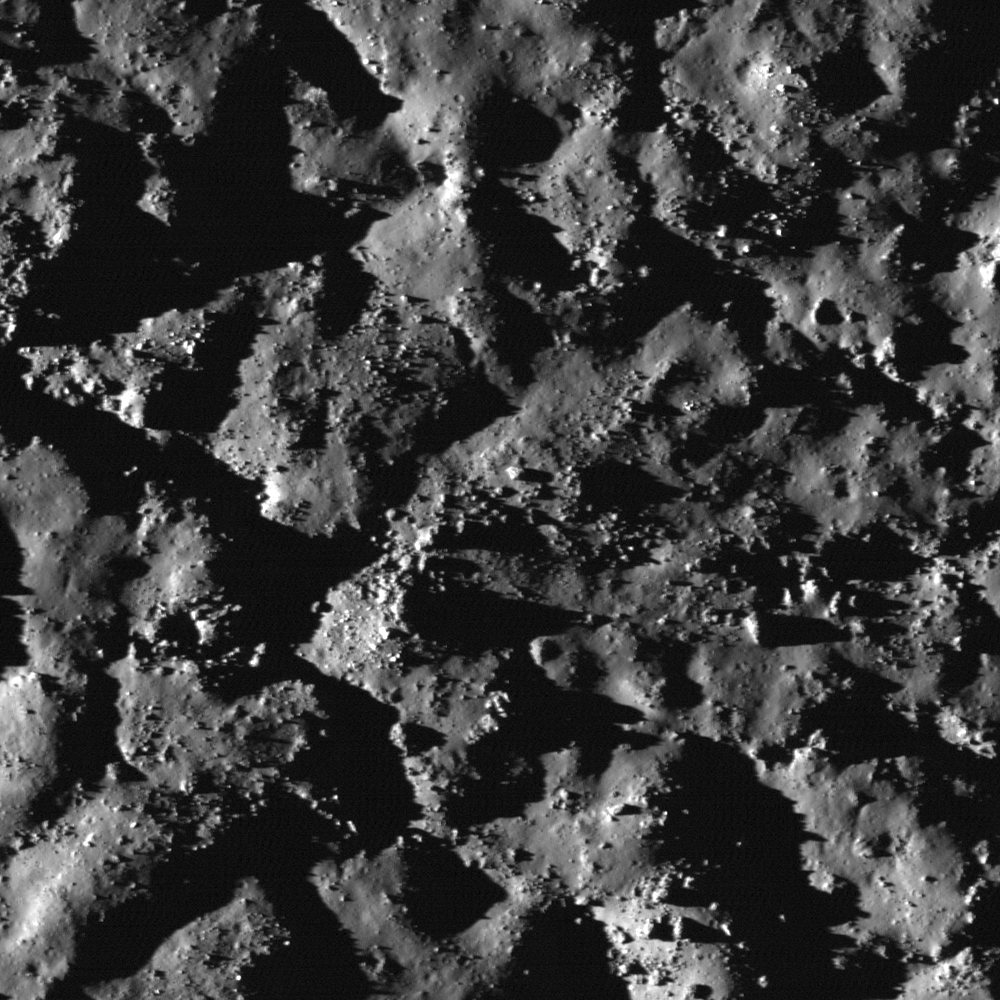
The bottom of Tycho's crater is covered by blocks, boulders and impact melt textures. The impact melt deposits often show networks of fractures visible at the LROC WAC pixel scale of 100 meters. At NAC resolution with very high incidence angles (illuminated almost along the horizon), the extremely complicated and chaotic nature of the surface is striking.
Impact melts have extremely complicated thermal histories. When the impacting meteoroid's kinetic energy is large enough, the initial temperature of an impact melt can be much higher than that of normal magma, which is driven by volcanic activity. The melts are mixed together with ejecta debris, flow down slopes and puddle; loosing heat and increasing in viscosity with time. Once settled in the crater floor, solidification starts at the top and the bottom (chilled margins), and continues little by little to the melt volume interior. Any kind of deformation during this time (for example, the isostatic rebound of the crater floor, uneven thermal contraction, or late flows pushing pre-existing melts) will disturb the solidifying melt surfaces to make the chaotic patterns and sometimes cause local "eruptions" of melt onto the newly solid layer.
Explore the extremely chaotic melt surface in the full NAC frame!
The topographic color was produced as a by-product of stereo analysis of the WAC global dataset. Producing the global Digital Elevation Model (DEM) is a big job being led by LROC team members at the German Aerospace Center (DLR; English version) in Berlin.
Related posts:
Rubble Pile on Fresh Crater Floor, Mounds in a melt pond, Impact melt features in Tycho crater's floor, More Impact Melt!
Published by Hiroyuki Sato on 15 June 2011
